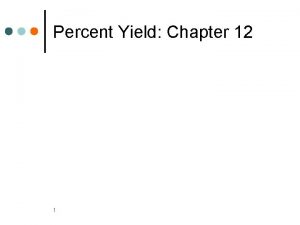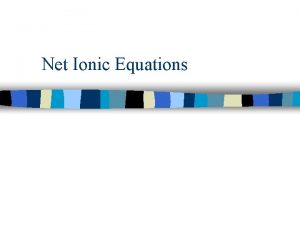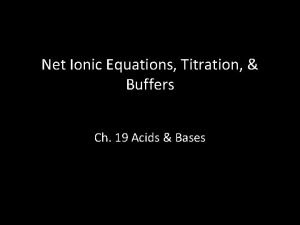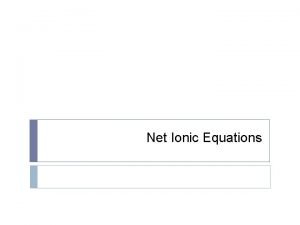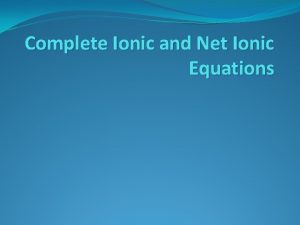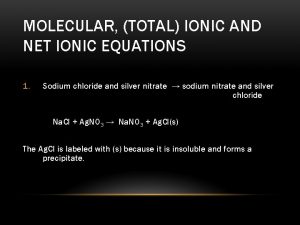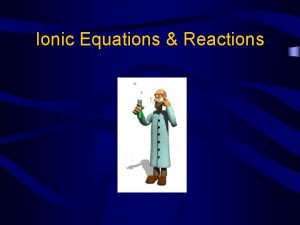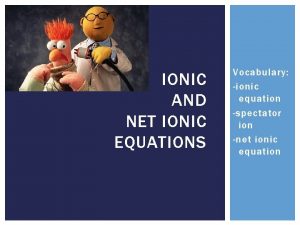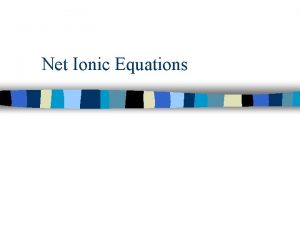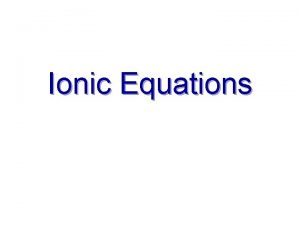Ionic equations show the actual change in a








- Slides: 8


� Ionic equations show the actual change in a chemical reaction. � These equations involve ions.

� Reactants and products are classified into solids, liquids, gases and aqueous solutions. � Solubility of substances has to be considered. If water is present in the reacting system, consider if the reactants and products are soluble in water.

� All nitrates are soluble. � All sulfates are soluble except for barium sulfate, calcium sulfate and lead(II) sulfate. � All chlorides and iodides are soluble except for silver chloride, lead(II) chloride, silver iodide and lead(II) iodide. � All carbonates are insoluble except for Group I carbonates and ammonium carbonates. � All oxides and hydroxides are insoluble except for Group I oxides & hydroxides.

� Write a balanced chemical equation with state symbols. � Break up substances that are in the aqueous state into ions. Ignore substances that are in the solid, liquid or gaseous states. � Cancel � Write common ions found on both sides. out the remaining components in the equation to get the ionic equation.

� Metal – Acid Reactions: Mg(s) + 2 HCl(aq) → Mg. Cl 2(aq) + H 2(g) Mg + 2 H+ + 2 Cl- → Mg 2+ + 2 Cl- + H 2 Mg(s) + 2 H+ (aq) → Mg 2+ (aq) + H 2 (g)

� Carbonate – Acid Reactions: Mg. CO 3(s) + 2 HCl(aq) → Mg. Cl 2(aq) + H 2 O(l) + CO 2(g) Mg. CO 3 + 2 H+ + 2 Cl- → Mg 2+ + 2 Cl- + H 2 O + CO 2 Mg. CO 3 (s) + 2 H+ (aq) → Mg 2+ (aq) + H 2 O(l) + CO 2 (g)

� Acid - Alkali Reactions: Mg. CO 3(s) + 2 HCl(aq) → Mg. Cl 2(aq) + H 2 O(l) + CO 2(g) Mg. CO 3 + 2 H+ + 2 Cl- → Mg 2+ + 2 Cl- + H 2 O + CO 2 Mg. CO 3 (s) + 2 H+ (aq) → Mg 2+(aq) + H 2 O(l) + CO 2 (g)
